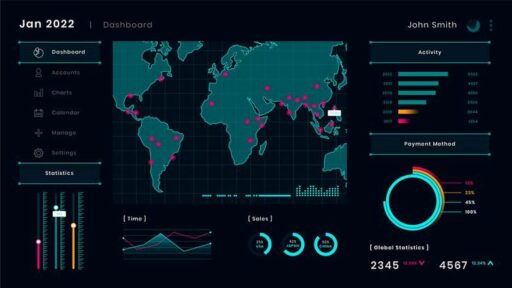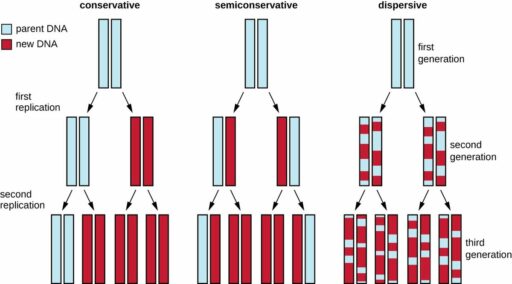Table of Contents
In this article about Data Analyst Interview Questions, we’ll explore the most common questions you might face during your interview. These questions have been curated after consulting with Data Analytics Training experts and are designed to gauge your technical skills, analytical thinking, and behavioral responses in various scenarios. We’ve categorized the questions into distinct sections for clarity and to help you prepare systematically. Let’s delve into the types of questions that will truly test your readiness for a data analyst role.
Key Takeaways
- Expect a mix of technical and behavioral questions that assess your data analytics terminology, statistical knowledge, and problem-solving abilities.
- SQL and data manipulation questions are the most frequently asked, with a presence in 85% of data analyst interviews.
- Excel, data visualization, and Tableau proficiency are crucial skills that will likely be tested through practical scenarios or direct inquiries.
- Advanced topics such as A/B testing, experimental design, and case studies are common for gauging your analytical depth and decision-making process.
- Prepare for situational behavioral questions by relating them back to your personal experiences and strengths to demonstrate good judgment.
Fundamentals of Data Analysis

Understanding Data Analytics Terminology
In the realm of data analysis, terminology is the bedrock upon which all understanding is built. Data analysis itself is a comprehensive process involving the inspection, cleaning, transformation, and modeling of data to extract valuable insights, inform conclusions, and support decision-making. This multifaceted process is crucial in a variety of domains, from business to social sciences.
A Data Analyst’s role is pivotal in navigating the vast sea of data generated daily, which amounts to 2.5 quintillion bytes. Their responsibilities span across various aspects of data handling, including the creation of visualizations, statistical analysis, and the exploration of data structures to identify patterns and anomalies.
When preparing for an interview, it’s essential to be well-versed in the common terminologies used in data analytics. This knowledge not only demonstrates your technical proficiency but also your ability to communicate effectively with stakeholders.
Familiarity with terms such as EDA (Exploratory Data Analysis), which guides future analysis and helps in understanding data, is indispensable. Below is a list of key terms you might encounter:
- EDA (Exploratory Data Analysis)
- Data Modeling
- Data Cleaning
- Statistical Analysis
- Data Visualization
Understanding these terms and their applications is a fundamental step in demonstrating your expertise during a data analyst interview.
Navigating Basic Behavioral Interview Questions
Behavioral interview questions are a staple in the data analyst interview process, designed to reveal your past experiences and how they’ve shaped your approach to challenges. Expect to recount specific instances where you’ve demonstrated problem-solving, adaptability, and collaboration. These questions are not just about what you did, but also why you did it and what the outcomes were.
Behavioral questions often delve into your methods for handling tight deadlines, data discrepancies, and team dynamics. They are a window into your work ethic and your ability to work effectively with others.
When preparing for these questions, consider structuring your responses using the STAR method (Situation, Task, Action, Result). This technique helps you deliver clear and concise answers that highlight your skills and experiences:
- Situation: Describe the context within which you operated.
- Task: Explain the challenge or responsibility you were given.
- Action: Detail the steps you took to address the task.
- Result: Share the outcome of your actions, including any measurable success.
Remember, the goal is to demonstrate how your past behavior is a predictor of your future performance in similar situations. Reflect on your experiences and be ready to discuss how you designed and measured the success of analytics experiments, as this is a common topic in interviews.
Essential Technical Skills for Data Analysts
To excel as a data analyst, one must possess a robust set of technical skills that are crucial for dissecting and interpreting vast amounts of data. Strong analytical skills are the foundation, enabling analysts to collect, organize, and make sense of data. Proficiency in programming languages such as SQL, R, and Python is often required, as these are the tools that allow for effective data manipulation and analysis.
In addition to programming skills, a data analyst must have a keen attention to detail to ensure accuracy in data collection and interpretation. This is complemented by mathematical and statistical skills, which are necessary for applying the correct methods and algorithms to extract meaningful insights from data.
A data analyst’s ability to solve problems creatively and efficiently is paramount. This involves identifying issues and opportunities within data sets and devising strategic solutions that drive business outcomes.
Lastly, industry knowledge and the ability to forecast trends using statistical tools are indispensable. Understanding the competitive landscape and regulatory environment within a specific industry can greatly enhance the relevance and impact of data analysis. Below is a list of key skills typically required for a data analyst:
- Analytical skills
- Mathematical and Statistical skills
- Problem-solving skills
- Attention to Detail
- SQL and Data Management
- Industry Knowledge
Mastering Technical Proficiencies

SQL and Data Manipulation
In the realm of data analysis, SQL is an indispensable tool for extracting and manipulating data. Data analysts are often quizzed on their ability to use SQL to solve business problems, focusing on analytics and reporting. For instance, they might be asked to write a query to filter transactions, excluding withdrawals, or to determine promotion rates among data scientists based on job-switching frequency.
SQL proficiency is not just about knowing the commands; it’s about understanding how to apply them to real-world data sets to glean actionable insights.
When preparing for SQL interview questions, it’s crucial to be familiar with different database types. OLTP databases, for example, are optimized for transactional processing and are write-heavy, while other databases might be more suited for analytical queries. Knowing how to optimize query performance, such as through data indexing, can be a key differentiator.
Here are some common SQL tasks that may come up in an interview:
- Extracting date information from timestamps
- Selecting records within a specific range
- Utilizing functions like
ISNULLto handle missing data
Understanding these concepts and being able to demonstrate them through SQL queries will showcase your technical proficiency and problem-solving skills in data manipulation.
Excel Proficiency in Data Analysis
Proficiency in Microsoft Excel is a cornerstone for any aspiring data analyst. Excel’s intuitive interface and versatile functionality make it an indispensable tool for quantitative and statistical analysis. Interview questions may range from basic spreadsheet management to advanced data manipulation techniques.
When preparing for an Excel proficiency segment of a data analyst interview, consider the following areas:
- Understanding and applying various Excel functions and formulas.
- Creating and interpreting data visualizations within Excel.
- Utilizing pivot tables for summarizing large datasets.
- Employing conditional formatting to highlight key data points.
It’s essential to demonstrate not only your ability to perform tasks in Excel but also your understanding of when and why to use specific features to convey data insights effectively.
Remember, a data analyst’s role often involves making data accessible and understandable. Excel plays a critical role in this, especially when it comes to designing and presenting information on dashboards. Be ready to discuss how you leverage Excel to make data-driven decisions and present findings in a clear and impactful manner.
Data Visualization Techniques
Data visualization is a critical skill for any data analyst, as it transforms complex data sets into clear and actionable insights. The ability to create intuitive and impactful visual representations is key to effective data communication. Tools like Tableau and Power BI are often highlighted for their interactive dashboards and user-friendly interfaces. A data analyst should be proficient in using various chart types to best represent the data, such as:
- Bar graphs for categorical data comparison
- Line graphs for trend analysis
- Pie charts to show proportions
Mastery of data visualization tools not only involves technical proficiency but also an understanding of design principles to make the visualizations both appealing and easy to interpret.
When preparing for an interview, expect questions about your experience with specific visualization tools and the unique features you’ve utilized. Discussing challenges encountered, especially with large data volumes, can also demonstrate your problem-solving skills and analytical thinking.
Python, Algorithms, and Coding Challenges
When preparing for a data analyst interview, proficiency in Python is a must. Interviewers often assess your ability to write simple scripts or functions that facilitate data movement between SQL, Excel, or dashboards. Expect questions that test your fundamental Python skills, rather than complex algorithmic challenges you might find on platforms like Leetcode.
Familiarity with Python’s libraries and frameworks is also crucial, as they can significantly streamline data analysis tasks.
While Python is essential, don’t overlook the importance of algorithms and coding logic. A solid understanding of these concepts can demonstrate your problem-solving abilities. Practice with common data structures and algorithm questions to ensure you can handle the technical aspects of the role.
Here’s a quick list of topics you might be quizzed on:
- Basic Python syntax and operations
- Data types and structures
- Common Python libraries (e.g., Pandas, NumPy)
- Simple algorithms (e.g., sorting, searching)
- Writing and understanding Python functions
Remember, the goal is to show that you can apply your coding skills to solve data-related problems efficiently. Reviewing the top 65+ Data Analyst interview questions and answers can be an excellent way to prepare for what’s ahead in 2024.
Advanced Analytical Knowledge

Statistics and Probability Concepts
When preparing for a data analyst interview, a solid grasp of statistics and probability is essential. Interviewers often probe your understanding of these concepts to assess your ability to analyze and interpret data effectively. Expect questions that test your knowledge of statistical theories and the application of probability in data analysis.
For instance, you might be asked to explain the significance of the Central Limit Theorem, which is crucial for hypothesis testing and calculating confidence intervals. Understanding the concept of statistical power is also important, as it relates to the likelihood of correctly rejecting a false null hypothesis.
Selection bias is another topic that may come up. It’s vital to recognize how data management procedures, like handling missing data, can exacerbate this issue.
Lastly, be prepared to discuss various probability distributions and their implications in data analysis. For example, knowing the difference between discrete and continuous distributions can be pivotal in choosing the right statistical methods for your data.
A/B Testing and Experimental Design
A/B testing, also known as split testing, is a fundamental tool in a data analyst’s arsenal, allowing for the comparison of two versions of a variable to determine which performs better. Understanding the intricacies of A/B testing is crucial for making data-driven decisions that can significantly impact business outcomes. When designing an A/B test, it’s essential to have clear goals, such as increasing conversions or engagement. Without a clear objective, the test may fail to provide actionable insights.
To assess the validity of an A/B test, one must consider statistical measures like p-values and confidence intervals. A p-value of .04, for instance, suggests that there is a 4% chance that the observed difference is due to random variation, rather than a true effect.
Determining the appropriate duration for an A/B test is also critical to avoid Type II errors (false negatives). This involves calculating the minimum effect size of interest, the sample size, and the desired level of certainty. Here’s a simple checklist for designing an effective A/B test:
- Define clear, measurable goals.
- Determine the minimum effect size that is meaningful.
- Calculate the required sample size for the desired confidence level.
- Decide on the duration of the test based on daily sample inflow.
Lastly, it’s important to recognize situations where A/B testing may not be suitable, such as when goals are unclear or when the sample size is insufficient to achieve statistical significance.
Case Studies in Data Analytics
In the realm of data analytics interviews, case studies are a pivotal component that tests a candidate’s ability to apply analytical skills to real-world business scenarios. Expect to encounter questions that require you to dissect a problem, analyze data, and present insights in a clear and impactful manner. These questions often simulate the responsibilities of a data analyst within a heavy analytics role, emphasizing problem-solving and the communication of insights to management.
When approaching a case study, it’s crucial to demonstrate a structured thought process. Break down the question methodically, analyze the components, and synthesize your findings into actionable recommendations.
For example, you may be presented with a scenario where you need to assess the performance of a new product feature. A structured approach might involve:
- Defining the key performance indicators (KPIs) relevant to the feature.
- Gathering and cleaning the data to ensure quality.
- Performing exploratory data analysis to identify trends and patterns.
- Applying statistical models to test hypotheses.
- Communicating your findings in a way that is understandable to non-technical stakeholders.
Remember, the goal is not just to showcase your technical prowess but also to exhibit your business acumen and ability to translate complex data into strategic insights.
Specialized Data Analyst Interview Questions

Tableau-Specific Questions
When preparing for a Tableau Data Analyst interview, it’s crucial to anticipate questions that will test your technical proficiency with the software. Expect to delve into functionalities such as creating calculated fields, using parameters, and optimizing dashboards. These inquiries aim to evaluate your ability to leverage Tableau’s interface and features to transform raw data into meaningful insights.
In addition to technical skills, interviewers will assess your analytical thinking and problem-solving abilities. A common question might be: Explain how you interpret visualizations to recommend data-driven actions. For example, you might discuss how you used Tableau to identify trends that led to a successful strategic decision.
It’s not just about creating visualizations; it’s about weaving a narrative that drives business impact.
Remember, Tableau Desktop and Tableau Server are known for their role-based permissions and powerful data visualization capabilities. Familiarize yourself with these aspects to demonstrate a comprehensive understanding of the software’s potential in managing and visualizing global data.
SAS-Related Inquiries
When preparing for a data analyst interview, proficiency in SAS (Statistical Analysis System) is often evaluated. SAS is a powerful tool for processing complex data and generating insights that aid in decision-making and forecasting. Familiarity with its syntax and functions is crucial for data analysts, as it allows them to efficiently mine, manage, and analyze data from various sources.
SAS-related interview questions might include topics such as interleaving, which involves combining sorted data sets into a single sorted set using a SET statement along with a BY statement. For example, to interleave data sets sorted by age, you would use the following code:
data combined;
set Data1 Data2;
by Age;
run;
Understanding the nuances of SAS’s input statement modifiers, like the single trailing @ and the double trailing @@, is also essential. These modifiers control how lines are read and processed, affecting how data is held during the input process.
Mastery of SAS syntax and functions is a key aspect of a data analyst’s skill set, and interviewers will likely probe this area to assess your technical acumen.
Puzzles and Problem-Solving Scenarios
In the realm of data analysis, the ability to tackle complex puzzles and engage in effective problem-solving is paramount. Interviewers often present scenarios that require logical reasoning and a methodical approach to test these skills. A candidate’s proficiency in this area can be a significant differentiator.
When discussing your problem-solving experiences, focus on a specific instance where you applied logic to navigate a challenging situation. Detailing the steps taken and the data-driven decisions made will illustrate your analytical capabilities.
To effectively showcase your problem-solving skills, consider the following points:
- Describe a complex data puzzle you’ve solved.
- Explain your methodical approach and the tools used.
- Emphasize the iterative process of analysis and refinement.
- Highlight the outcome and its impact on the project or business.
Remember, your ability to communicate the process clearly is as crucial as the solution itself. Interviewers look for candidates who not only solve problems but also articulate their approach in a way that is understandable and convincing.
Strategies for Behavioral Interview Success

Preparing for Situational Questions
When preparing for situational questions in a data analyst interview, it’s crucial to reflect on past experiences where you’ve demonstrated key competencies. Craft responses that showcase your problem-solving abilities and how you handle challenges. For instance, consider how you’ve coped with tight deadlines or resolved data discrepancies in the past.
- Reflect on past experiences
- Showcase problem-solving abilities
- Handle challenges effectively
Employers are interested in your adaptability and how you work under pressure. They may present hypothetical scenarios to assess your soft skills, such as communication, teamwork, and decision-making. It’s not just about your technical acumen but also your ability to understand and navigate the business landscape.
Focus on crafting responses that resonate with precision and strategic thought. This approach will not only demonstrate your analytical prowess but also your readiness to collaborate and contribute to the team’s success.
Highlighting Experience and Strengths
When preparing for a data analyst interview, it’s crucial to articulate your experience and strengths in a way that aligns with the job’s requirements. Start by reviewing the job description and identify the key skills and experiences that are most relevant. Then, prepare a concise summary of your professional background, focusing on achievements that demonstrate your proficiency in those areas.
For instance, if the job emphasizes expertise in business intelligence, you might mention your experience in developing reports that cover topics on business intelligence, data science, and machine learning. It’s also beneficial to discuss any successful projects or initiatives you’ve led, particularly those that resulted in measurable improvements or insights.
- Dedication to continuous learning
- Teamwork and collaboration
- Problem-solving capabilities
- Adaptability to new challenges
Ensure you have concrete examples to back up each point, such as a time when you used your problem-solving skills to overcome a complex data issue or when your adaptability allowed you to successfully manage a project that was outside your usual scope of work.
Demonstrating Good Judgment and Decision Making
In the realm of data analysis, good judgment and decision making are paramount. Decisiveness is not just about making choices; it’s about making the right choices in the face of uncertainty. When asked to discuss a time where you had to make a decision with limited information, focus on your ability to deduce information and create a plan of action. This demonstrates not only your decisiveness but also your self-direction and adaptability.
Adaptability is key in data analysis. Your response should illustrate how you can adjust your decision-making process to accommodate challenging situations.
Effective communication is another critical aspect of decision making. When designing dashboards for executives, for example, prioritize clarity, relevance, and actionable insights. Below is a list of traits that interviewers look for when assessing judgment and decision-making skills:
- Attention to detail
- Critical thinking
- Effective communication
- Empathy
- Humbleness
Remember, showcasing these traits effectively can often be achieved by relating past experiences where you’ve demonstrated leadership, as leadership often encompasses these qualities.
Conclusion
As we wrap up this comprehensive guide on the top questions to expect in a data analyst interview, it’s clear that preparation is key. From understanding the basics of data analytics to mastering technical skills in SQL, Excel, and data visualization, each category of questions serves as a stepping stone towards showcasing your expertise. Behavioral questions will test your problem-solving abilities and experience, while technical questions will probe your proficiency with tools and concepts. Remember to relate your answers to real-world scenarios and highlight your strengths. With the insights and tips provided in this article, you’re now equipped to approach your data analyst interview with confidence and poise. Good luck!
Frequently Asked Questions
What are the basic terminologies in data analytics that I should be familiar with for an interview?
You should be familiar with terms like data mining, data cleansing, data visualization, quantitative analysis, and KPIs (Key Performance Indicators), among others.
How should I prepare for behavioral interview questions for a data analyst role?
Prepare by reflecting on past experiences where you applied analytical skills, solved complex problems, or made data-driven decisions. Use the STAR method (Situation, Task, Action, Result) to structure your responses.
What technical skills are essential for data analysts?
Proficiency in SQL for data manipulation, expertise in Excel, understanding of data visualization principles, and knowledge of a programming language like Python are essential technical skills for data analysts.
How important is SQL knowledge in data analyst interviews?
SQL knowledge is critical, as SQL and data manipulation questions are asked in approximately 85% of data analyst interviews.
Can you provide an example of a common statistical concept that might be discussed during a data analyst interview?
Interviewers often ask about statistical concepts such as hypothesis testing, regression analysis, p-values, confidence intervals, and the difference between descriptive and inferential statistics.
What types of puzzles or problem-solving scenarios might I encounter in a specialized data analyst interview?
You might be presented with logic puzzles, brainteasers, or case studies that require you to analyze data, identify patterns, and derive insights to solve business problems.





